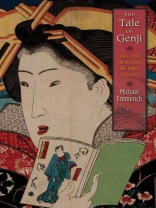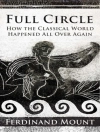Michael Emmerich thoroughly revises the conventional narrative of the early modern and modern history of The Tale of Genji. Exploring iterations of the work from the 1830s to the 1950s, he demonstrates how translations and the global circulation of discourse they inspired turned The Tale of Genji into a widely read classic, reframing our understanding of its significance and influence and of the processes that have canonized the text.
Emmerich begins with an analysis of the lavishly produced best seller Nise Murasaki inaka Genji (A Fraudulent Murasaki’s Bumpkin Genji, 1829–1842), an adaptation of Genji written and designed by Ryutei Tanehiko, with pictures by the great print artist Utagawa Kunisada. He argues that this work introduced Genji to a popular Japanese audience and created a new mode of reading. He then considers movable-type editions of Inaka Genji from 1888 to 1928, connecting trends in print technology and publishing to larger developments in national literature and showing how the one-time best seller became obsolete.
The study subsequently traces Genji’s reemergence as a classic on a global scale, following its acceptance into the canon of world literature before the text gained popularity in Japan. It concludes with Genji’s becoming a ‘national classic’ during World War II and reviews an important postwar challenge to reading the work after it attained this status. Through his sustained critique, Emmerich upends scholarship on Japan’s preeminent classic while remaking theories of world literature, continuity, and community.
Table of Content
Acknowledgments
A Note to the Reader
Introduction: Replacing the Text
Part I. Ninety-Nine Years in the Life of an Image
Touchstone 1. Reimagining the Canon
1. A Gokan Is a Gokan Is a Gokan: Inaka Genji Beyond Parody
2. Reading Higashiyama: Image, Text, and Book in Inaka Genji
3. Turning a New Page: Bibliographic Translation and the Yomihonization of Inaka Genji
Part II. In Medias Res
Touchstone 2. Triangle
4. The History of a Romance: Genji Before Waley
5. From the World to the Nation: Making Genji Ours
6. ‘Genji monogatari: Translation and Original’
Conclusion: Turning to Translation, Returning to Translation
Notes
Index
About the author
Michael Emmerich is associate professor of Japanese literature and cultural studies at the University of California, Los Angeles. He is the author of The Tale of Genji: Translation, Canonization, and World Literature (CUP 2015), and the editor of Read Real Japanese Fiction: Short Stories by Contemporary Writers and New Penguin Parallel Text: Short Stories in Japanese.












